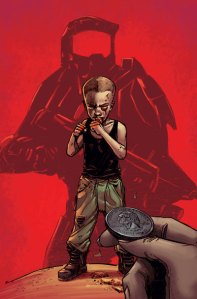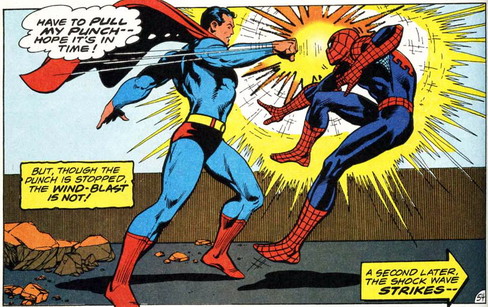Thanks to being one of the most loved and profitable entities in popular culture over the last decade, Halo has expanded way beyond the gaming space. Books, direct-to-DVD movies and toys aplenty have all spun off of Bungie’s seminal sci-fi FPS. Marvel and Microsoft have put out a bunch of Halo-centric comics over the last few years and the latest ties into the upcoming release of Halo: Reach. The Halo: Fall of Reach–Boot Camp miniseries adapts Eric Nylund’s novel, which detailed some of the inner working of the SPARTAN program. The monthly series will be appearing in comic shops next week. To find out how the project came together, I talked to the series’ writer Brian Reed, who’s also worked on Spider-Man and had a long run on Ms. Marvel and Frank O’Connor from 343 Industries–the Microsoft Games Studios division that’s the hub of all things Halo.
When do you remember first getting grabbed by the world of video games?
Brian Reed: When I was 7 years old and we got our Atari 2600, I was addicted for life!
Frank O’Connor: I’ve played video games since I was a child. The first game I played, which is going to age me here, was pong, on one of those nondescript multi-pong variant consoles. I played it at a friend’s house and I was hooked. It was magical. I used to insert my own “storylines” into anything I was playing. Pong, Combat on Atari 2600, Space Invaders, you name it. Back then I even used to make my own sound effects because the in-game ones were sort of primitive.
What are some of your strongest comics memories?
Reed: Buying Spider-Man and GI Joe off the spinner rack back when spinner racks still existed and dinosaurs roamed the Earth. I was a Marvel kid from the start when someone gave me a copy of Superman vs. Spider-Man and I wanted to see more of this Peter Parker guy.
O’Connor: My grandmother used to buy me comics when I was very young. Mostly Spider-Man, but occasionally Fantastic Four and others. In Scotland, where I grew up, Marvel comics at that time were reprinted (and re laid-out) in a horizontal landscape format. Possibly on remnant paper from some other purpose. If anything, that added something to the experience that you can’t recreate. I have to figure those are collector’s items now. I remember my first comic-nerd rage too, when a cover would promise, for example, that Namor was going to destroy Spider-Man, yet inside they would actually team up after a brief argument. I remember thinking, “Why must this Stan Lee fellow turn my childhood into a palace of lies?”

Brian, you’ve worked in game development. How would you approach a Ms. Marvel game? How would you make gameplay elements surrounding this character stand out from, say, Bayonetta?
Reed: A game always starts with what your lead character can do, and then you build around that to find interesting experiences. For Ms. Marvel, you’d want to focus on flight, feats of strength, and some ranged combat. I’d probably look at involving the Brood as bad guys so you could get into the character’s history as well as have lots of enemies to beat down. Then, for extra set dressing, I’d find ways to work in some Avengers and X-Men cameos.
In making the Boot Camp comics, you don’t have the benefit of sweeping camera pans or a soundtrack or interactive elements. Was it hard to work in the franchise’s epic scope onto the printed page?
Reed: Comics are at their most basic a very visual medium, and Halo gives you so much to play with visually that the real difficulty is figuring out how to fit in all the things you want to do.


